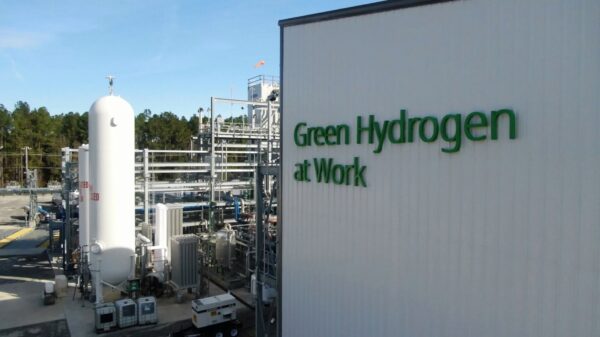Montreal-based renewable energy firm TES Canada H2 Inc is investing $4 billion to build a “green” hydrogen plant in Shawinigan, Quebec, to help both industry and transport sectors reduce their dependence on hydrocarbons.
The company said on Friday that natural gas distributor, Énergir would be the plant’s primary customer, using the hydrogen to produce approximately one-fifth of its 115 million cubic meters of renewable natural gas (RNG) by 2030.
A wind and solar farm will provide most of the energy needed for the green hydrogen project, which will create over 1,000 temporary jobs during the construction period. The project will also produce 70,000 tonnes of green hydrogen annually starting in 2028. TES Canada will devote a third of its production to decarbonizing long-haul transportation, and the rest will be used to produce electric renewable natural gas.
Approximately one-third of the green hydrogen production will be allocated to decarbonizing long-haul transportation, which constitutes nearly 10 per cent of Québec’s annual emissions. The remaining volumes will serve for the production of e-NG (electric renewable natural gas), a sustainable drop-in solution for hard-to-abate industries. TES Canada’s project alone will contribute to achieving 3 per cent of Québec’s greenhouse gas reduction targets by 2030.
“This major commitment to the local community is the cornerstone of long-term economic well-being for the region,” said Minister of the Environment and Climate Change, Steven Guilbeault in a press release.
“By combining the reduction of CO2 emissions, the creation of quality jobs along with regional economic dynamism, this project illustrates the immense potential of green energy for our collective future.”
When it becomes operational in 2028, the project will exclusively produce 70,000 tonnes of green hydrogen for end users in Québec. It ranks among the largest decarbonization projects announced in Québec to date, with the goal of reducing annual CO2 emissions by 800,000 tonnes.

Infographic showing the green hydrogen process. Image via the World Bank.
Read more: Portugal’s PM resigns over corruption probe tied to lithium and green hydrogen projects
Read more: EverWind Fuels acquires three wind farms for green hydrogen production
What is ‘green’ hydrogen?
Various techniques exist for producing hydrogen, and depending on the process, the resulting hydrogen can be labelled as black, grey, blue, green and so on.
However, hydrogen itself is odourless and colourless. Assigning a colour to hydrogen serves as a visual means of indicating its origin, specifically, the materials and energy sources employed in its production cycle.
For example, hydrogen capture is the byproduct of a process called water electrolysis. This process produces hydrogen by passing an electric current through water to break down its molecules and extract hydrogen. When the electricity used in the process comes from a renewable source like hydroelectricity, wind, solar power or any other source with low carbon emissions, the resulting hydrogen receives the label of green hydrogen.
Green hydrogen constitutes about 2 per cent of global production, and its production costs currently exceed those of grey hydrogen, which uses natural gas.
The most common method of production is steam reforming of natural gas, which yields grey hydrogen from natural gas at a low cost. According to Quebec’s Department of Agriculture, Environment and Natural Resources, 95 per cent of the worldwide hydrogen consumption stems from the production of grey hydrogen.
Additionally, it is possible to convert coal into gas, producing brown hydrogen from brown coal (lignite) or black hydrogen from black coal (anthracite).
These processes involve the transformation of fossil fuels and result in significant greenhouse gas emissions. The production of 1 kg of hydrogen from natural gas emits 9 kg of carbon dioxide (CO2).
If steps are incorporated into the production cycle to capture and store the emitted CO2, the resulting hydrogen will be categorized as blue hydrogen.
Another method to produce green hydrogen involves gasifying biomass. This process includes heating the biomass at very high temperatures to extract synthetic gas and eventually hydrogen.
TES Canada H2 Inc’s $4 billion investment in a green hydrogen plant in Shawinigan, Quebec, signifies a significant step toward reducing carbon emissions and fostering economic growth in the region.
By producing green hydrogen with a focus on sustainability, the project exemplifies the potential of green energy to address environmental concerns while creating quality jobs and contributing to Quebec’s decarbonization efforts.
Follow Joseph Morton on Twitter
joseph@mugglehead.com














